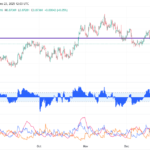The Philippines’ gross international reserves (GIR) rose in June 2025, driven by foreign currency deposits made by the national government with the Bangko Sentral ng Pilipinas (BSP) and income from BSP investments.
Preliminary data show that the GIR grew from $105.2 billion as of end-May 2025 to $105.3 billion at end-June 2025.
GIR consists of foreign-denominated securities, foreign exchange and other assets, including gold. These reserves help a country finance its imports and foreign debt obligations, stabilize its currency and provide a buffer against external economic shocks.
The latest GIR level provides a robust external liquidity buffer, equivalent to 7.2 months’ worth of imports of goods and payments of services and primary income.
GIR is considered adequate if it can finance at least three months’ worth of a country’s imports of goods and payments of services and primary income. The current GIR level ensures the availability of foreign exchange to meet balance of payments financing needs, such as for payment of imports and debt service, even in extreme conditions where there are no export earnings or foreign loans.
It also covers about 3.3 times the country’s short-term external debt based on residual maturity. Short-term debt based on residual maturity refers to outstanding external debt with an original maturity of one year or less, plus principal payments on medium- and long-term loans of the public and private sectors falling due within the next 12 months.
The GIR level at a specific period is deemed adequate if it provides at least 100 percent cover for the payment of the country’s foreign liabilities, both public and private, due within the immediate 12-month period.
Net international reserves also increased from $105.0 billion as of end-May 2025 to $105.3 billion at end-June 2025.
Net international reserves are the difference between the BSP’s reserve assets (GIR) and reserve liabilities (short-term foreign debt and credit and loans from the IMF).





















